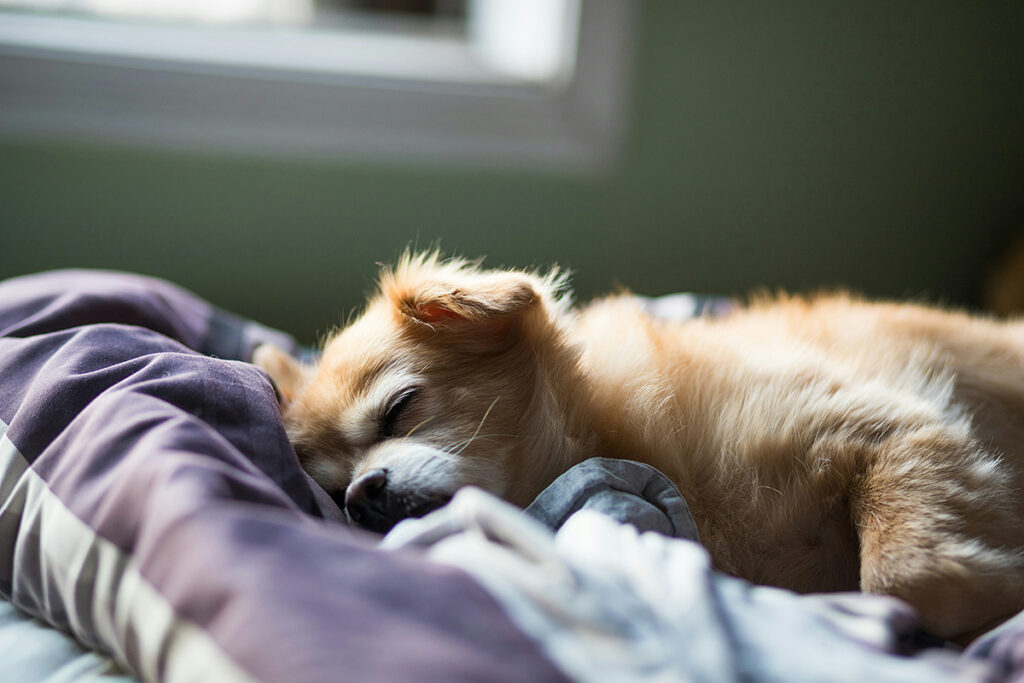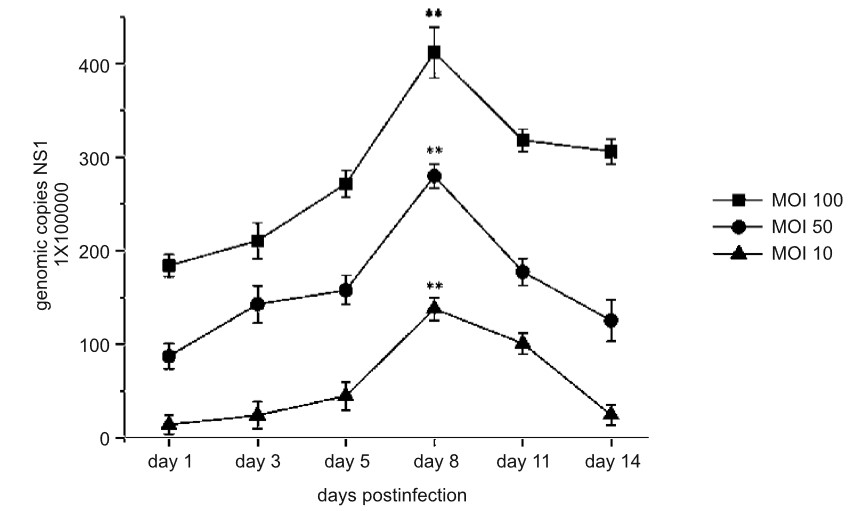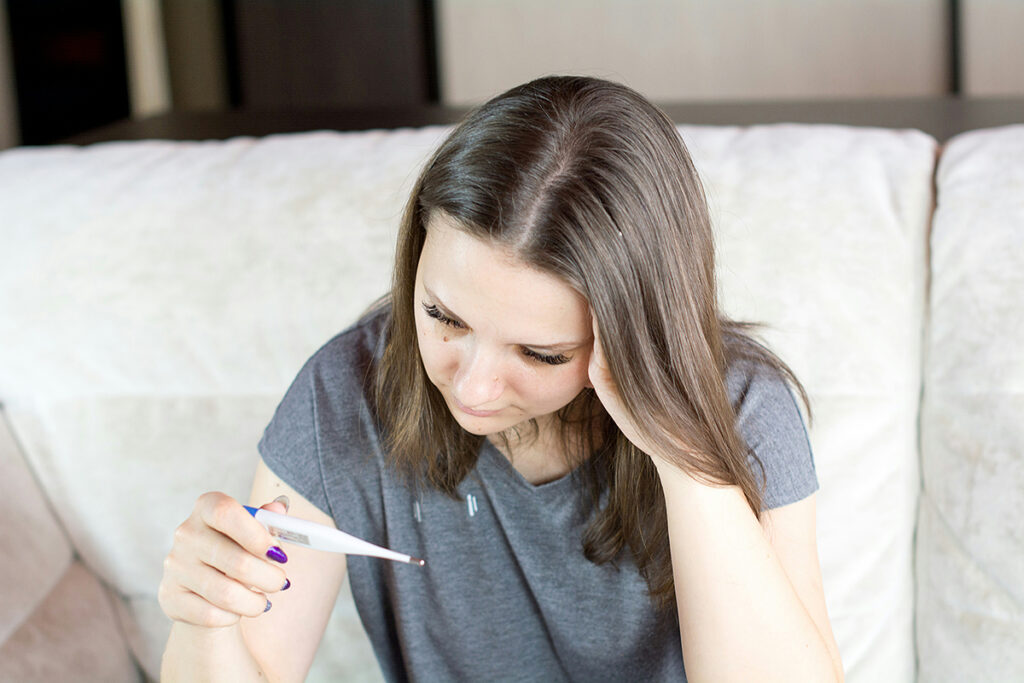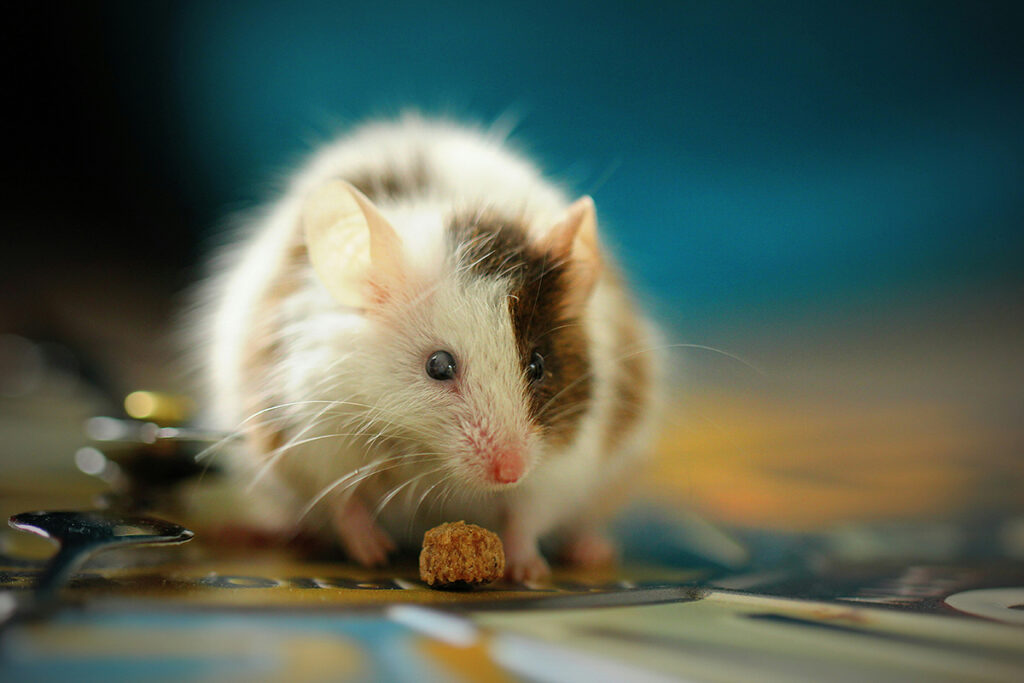Canine parvovirus induces a severe gastroenteric disease with a high mortality rate. The virus can suppress the dog’s innate immunity, which relies on type I interferons, allowing the virus to replicate within the animal’s cells despite defensive mechanisms. Type I interferons (IFN-1) are the body’s primary antiviral response, as they activate cellular defenses against infections.
Researchers from leading Mexican universities quantitatively assessed:
- The ability of canine parvovirus to evade the immune response and suppress the synthesis of antiviral proteins;
- The effectiveness of treating parvovirus infection with type I interferon administration.
The study was conducted on a canine kidney cell culture. The strain of canine parvovirus was isolated from a stool sample of a dog suffering from hemorrhagic gastroenteritis.
The Intensity of Infection Depends on Viral Particle Concentration at Infection
The scientists experimented with three viral concentrations of infection:
- High concentration – 100 copies of viral genome per canine cell;
- Medium – 50 virions;
- Low – 10.
In all three scenarios, the peak viral particle count occurred on the 8th day of infection. However, the infection’s intensity significantly varied. For instance, on the 14th day of the experiment, the virion count at high infection intensity was approximately ten times higher than at medium, and the medium was about ten times higher than at low. The numerical scale on the graph is logarithmic:
Image Source: https://journals.pan.pl/dlibra/publication/138728/edition/120924/content
Infected Cells Produce Insufficient Interferon to Combat Parvovirus
In a subsequent experiment, the researchers evaluated the infection development dynamics in two groups of canine cells. One group was treated with type I interferon before infection, and the other group was infected without IFN-1 treatment. Scientists used feline interferon omega (IFN-ω, a subtype of IFN-1) for cell treatment, as this interferon is commercially available.
Throughout the experiment, the viral particle concentration in cells treated with IFN-1 remained virtually unchanged, whereas, in untreated cells, it increased with the intensity observed in the previous experiment.
Parvovirus Suppresses Synthesis of Antiviral Proteins, While Interferon Treatment Stimulates Their Production
The scientists evaluated the dynamics of antiviral molecule production by infected cells using two groups: one treated with IFN-1 before infection and the other infected without IFN-1 treatment.
Infected cells under the influence of feline IFN-ω produced approximately four times more of their own IFN-β (a subtype of IFN-1) than untreated cells.
With IFN-1 administration, the production of the antiviral protein IFIT1 was 15 times more intense than without it. The IFIT1 protein is directly bound to the viral genome, blocking virus replication. The peak production of IFIT1 and endogenous IFN-β occurred on the 8th day.
The graphs depict the dynamics of endogenous interferon-beta and antiviral protein IFIT1 production. Cells pre-treated with IFN-1 are marked in gray, and untreated cells are observed in black. The numerical scale in both cases is logarithmic:
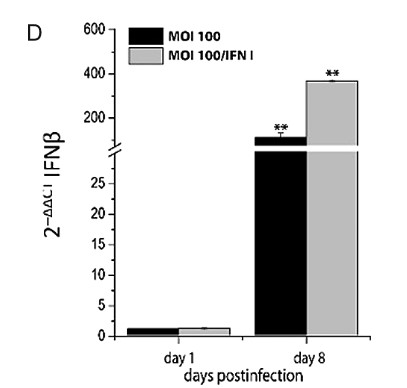 |
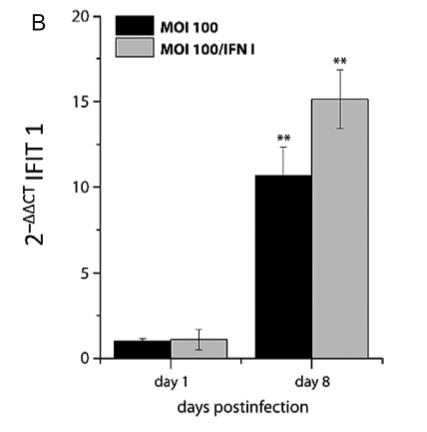 |
Image Source: https://journals.pan.pl/dlibra/publication/138728/edition/120924/content
Parvovirus Suppresses the Function of Proteins Activating Interferon Synthesis
In the final experiment, the scientists assessed the effectiveness of mechanisms through which canine parvovirus suppresses innate immunity mediated by type I interferons.
The researchers compared the mechanisms triggering IFN-1 synthesis in healthy and infected cells. A statistically significant difference emerged only on the 3rd day of infection development. On the 8th day, with high viral concentration at infection, the amount of proteins activating interferon synthesis increased only threefold, and with low concentration, sixfold, which is still insufficient to prevent infection development.
The experiment demonstrated that canine parvovirus possesses efficient mechanisms for suppressing IFN-1 synthesis, yet the virus cannot disrupt the function of existing interferon molecules.
Conclusion
Canine parvovirus shields itself from the innate immune response by suppressing the necessary type I interferon production. Treatment with feline interferon omega stimulates the production of endogenous interferon. Consequently, infected cells generate sufficient antiviral proteins to cope with the infection and prevent virus proliferation.
Useful article, necessary information? Share it!
Someone will also find it useful and necessary:
References
Participation of interferon type I during canine parvovirus infection
